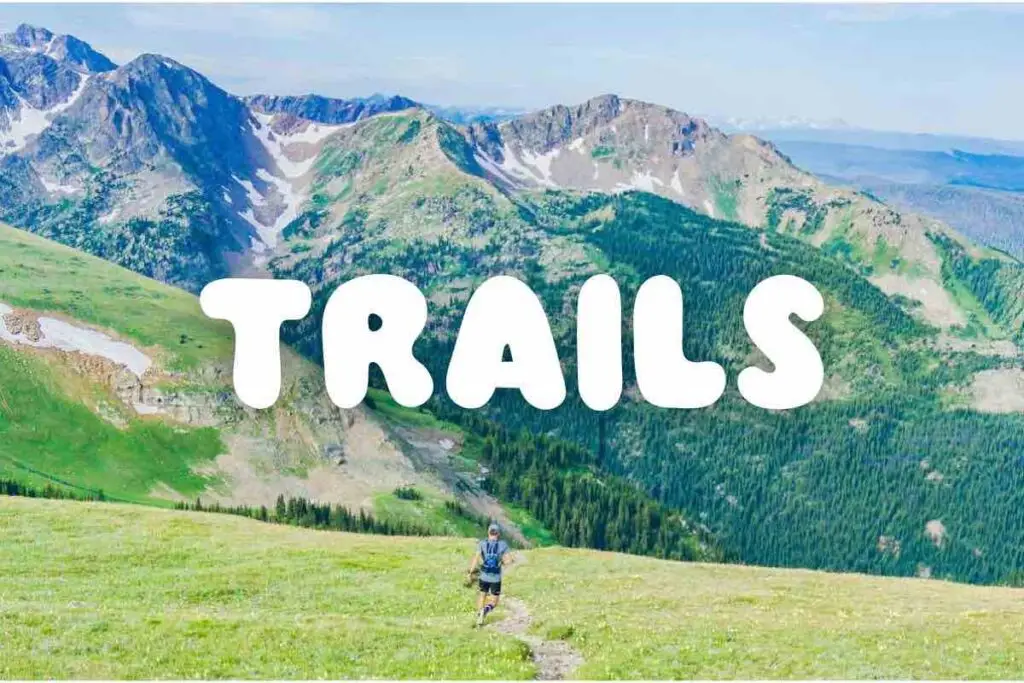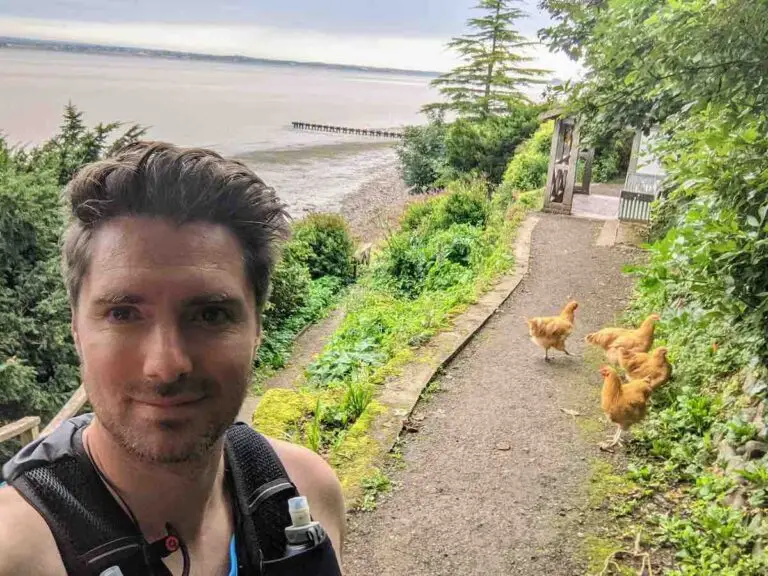If you’re wondering how to start trail running, you’re in for a treat.
Free range, off-road runs are all-out adventure. The pinnacle of outdoor exercise.
Raw, exhilarating, beautiful, and sometimes unforgiving, you never quite know what you’re going to get.
An escape from the monotony of road running, trail running exposes you to ever-changing landscapes and nature’s obstacles, such as roots, rocks, and even random encounters with wildlife. As a result, your body and mind are constantly engaged, making this an excellent form of physical and mental exercise. Trail running is not only about conquering challenging terrains but also immersing yourself in the beauty and serenity of the wilderness, being at one with nature.
So, let Joy Runs lead you through the basics of how to start trail running. In this guide we’ll cover topics such as:
- the joys of trail running that await you
- how to research and prep for a trail run
- trail conditions throughout different seasons
- the best trail running kit, from trail shoes to GPS watches
- how to transition from road running
How to Start Trail Running: Free Range Runs in Nature’s Playground
What I love about trail running is its versatility. No two off-road runs are the same with countless choices and plot twists. Each is an education in its own way. There’s something for all abilities too.
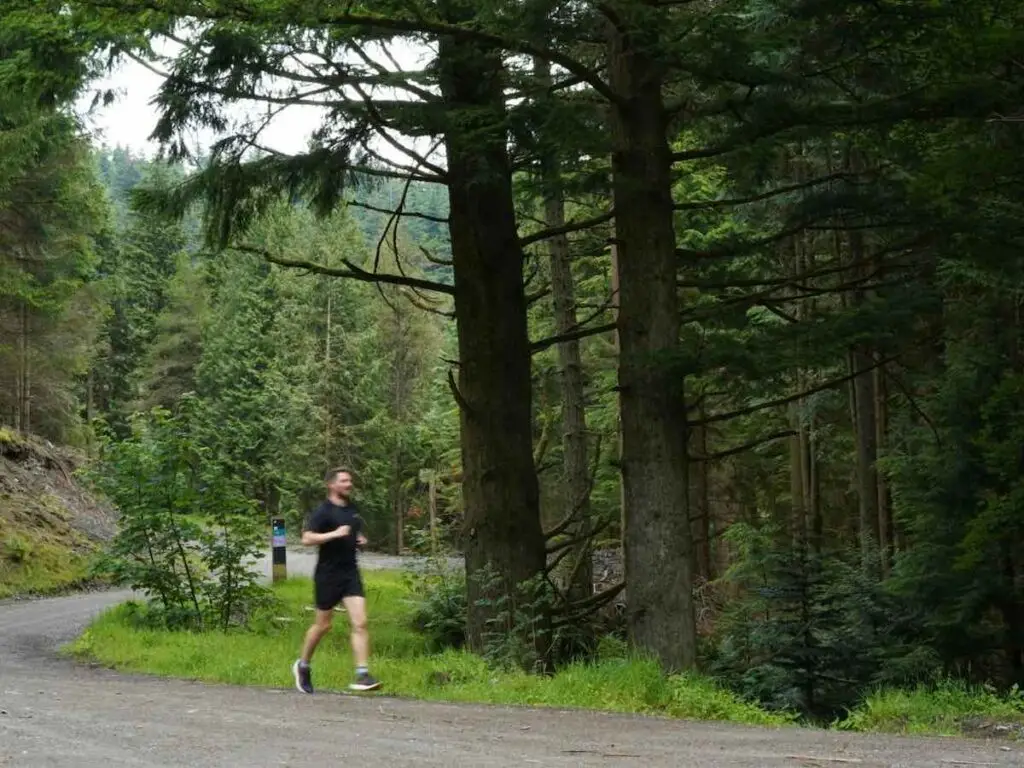
Trail running unlocks the great outdoors. You’re exposed to a mix of natural terrains, such as forest trails, riverside paths, dirt tracks, the ups and downs of running hills, and grass fields, plus the backdrops are drop dead gorgeous. Most cities have pockets of woodlands and green spaces too, so scenic trails are never too far away.
I also love the mental benefits of trail running. It helps me to disconnect from the stresses of modern life and tune into what’s important. It’s where I do my best thinking too. Whenever I’m in need of inner peace or a burst of inspiration, the answers can usually be found in the trails.
Add more joy to your runs 💌
- 1 Challenge p/w
- Run your way
- 100% Free
Your first foray into trail running is likely to be a slight shock to the system – in the best possible way.
Here’s how to make the transition as smooth as possible:
- Drop the pace – follow your joy instead, although a running watch with a heart rate monitor can be a helpful tool to gauge your exertion on a trail
- Invest in trail running footwear – trail shoes provide better traction, stability and protection (more info in the next section)
- Start small – give your muscles and joints time to adapt, the longer, more technical trails will always be there
- Don’t try to run it all – it’s not all run-able terrain on a trail, so go slow, walk, go over, through when needed
- Do your research – minimise the risk of getting lost on a trail by printing or downloading the map to your GPS watch; consider picking a loop on for your first few runs to avoid getting lost
- Keep safety in mind – tell someone your planned route, carry food and water, and be prepared for changes in weather or trail conditions
- Practice reading the terrain – using an old school paper map will help you become more comfortable with your navigation skills and gain confidence in your ability to tackle new trails
- Take a change of clothes and shoes if driving to routes – expect lots and lots of mud!
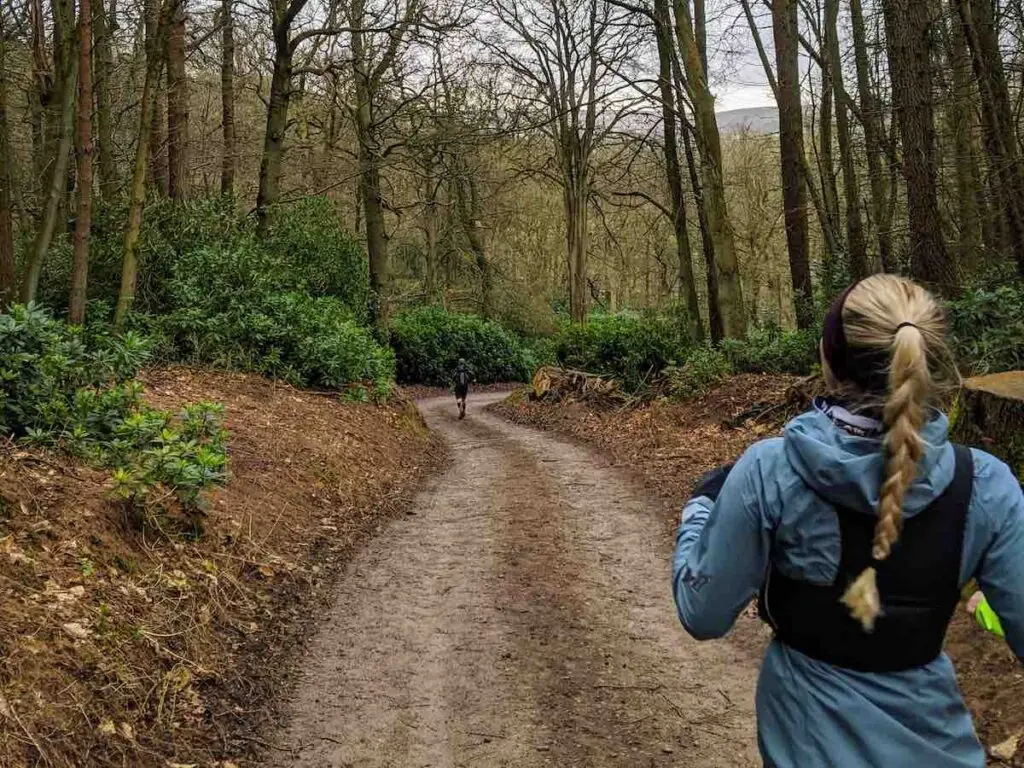
Most importantly, have fun! Trail running is a passport to a life full of exploration and adventure.
Don’t forget to tag Joy Runs in your run pics on Instagram. if this guide to how to start trail running does inspire you hit the trails.
—> Related reading: The Joy of Slow Running – Swap Speed for More Soulful Runs
Trail Running vs Road Running – What’s the Main Differences?
Road running is where most of us begin – it can be done anywhere, any time, and is a convenient way to stay active all year round. But urban running can have plot twists too…
The hustle and bustle of city life. A feast for the eyes. The concentration of landmarks for a spot of running tourism. Discovering new neighbourhoods. The fact that no two cities are alike. People watching. Beautifully manicured parks. Coffee shop pitstops. The romance of city culture. And so much more!
Another one of road running’s plusses is speed. Road running can help to equip you for trail running, as it gives you a better VO2 engine for climbing those hills. In return, the trickier variables of trail running can help build endurance and resilience for road races where the weather changes or you’re facing inclines in the later stages.
Like many things, the sweet spot is often in combining the two. Whether that’s running to the trail head on road or dialling up trail running in the sunnier months.

The injuries often differ too: swapping the stress fractures and runner’s knee for slipping on unstable ground or tripping over obstacles on trails. Good form and an eye for danger can help loads though…
Good trail running technique involves an upright posture, slightly leaning forward from the ankles, and keeping your arms relaxed and close to your body. When running uphill, shorten your stride, and use your arms to help propel you forward. Conversely, when running downhill, lean slightly forward and let gravity assist your descent, taking care not to over-stride or slam your foot into the ground
It’s also important to look where you’re going. Concentrate and scan for any potential hazards such as rocks, holes, tree roots and branches. When running a new route, I also try to keep track of any trail markers or unique features in case I lose my bearings.
10 Joys of Starting Trail Running: Fun, Free & Unpredictable
So many of the Joy Runs challenges are designed to help you to discover the joy of running in nature.
Whether forest running, running by water, the small joys found in the different colours of the seasons, or the joy of running in parks. Trail running is the gift that keeps on giving.
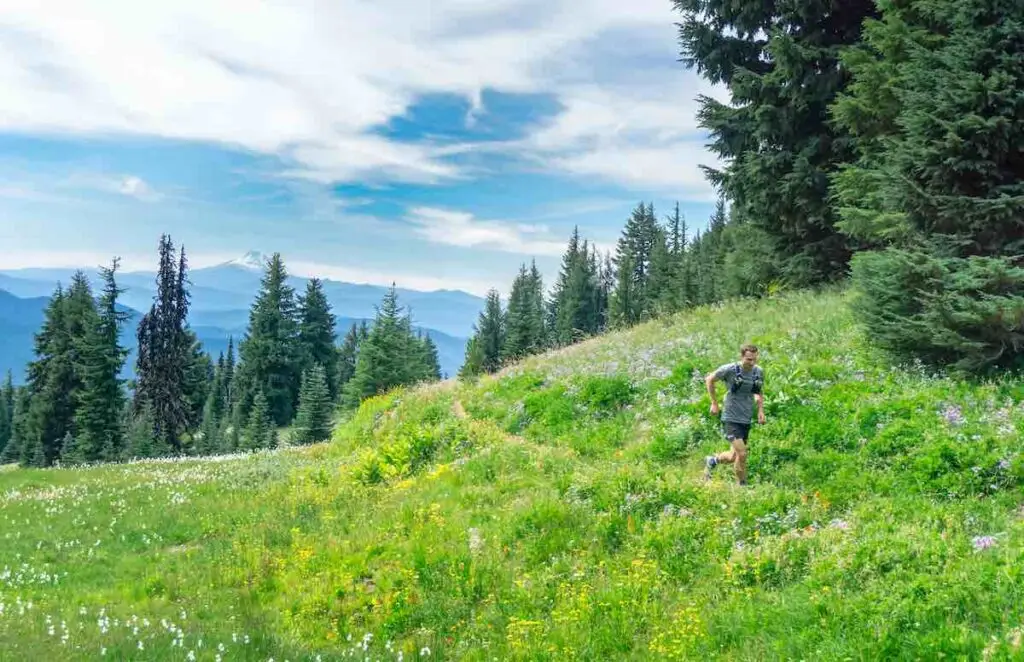
Here’s what I love most about trail running:
- Being immersed in nature – trail runs are my go-to mental health hack, washing away stress and anxiety caused by the fake rush of modern life
- Trail running is a great leveller – more technical trails require different running skillsets to road running
- Keeps things interesting – the mixture of terrains and routes adds variety to your training
- Unplug from the world – much like rawdogging on a run, the trails strip away life’s noise for more mindful runs
- Stimulation on tap – full of moments of awe, from spellbinding golden hours to never-ending landscapes to explore
- You learn how to grind out runs – trail runners are more well-rounded and resilient in unfavourable race conditions, fact!
- Helps build muscular endurance – uneven terrain and varying elevations force your body to work harder, engaging more muscle groups and improving balance, strength, and agility
- Trail running is kind on your joints – the uneven surfaces and softer ground can reduce the impact on your joints, reducing the risk of injury
- The ability to give back to nature – I’m a big advocate of ‘Plogging’, which is the act of litter picking on a run
- Peace and quiet – rewilding your exercise helps to avoid crowded pavements and roads
Trail Kit Bag: Suggested Gear to Start Trail Running
Running’s beauty is its simplicity, however there are a few pieces of kit that’ll help when embarking on your trail running journey.
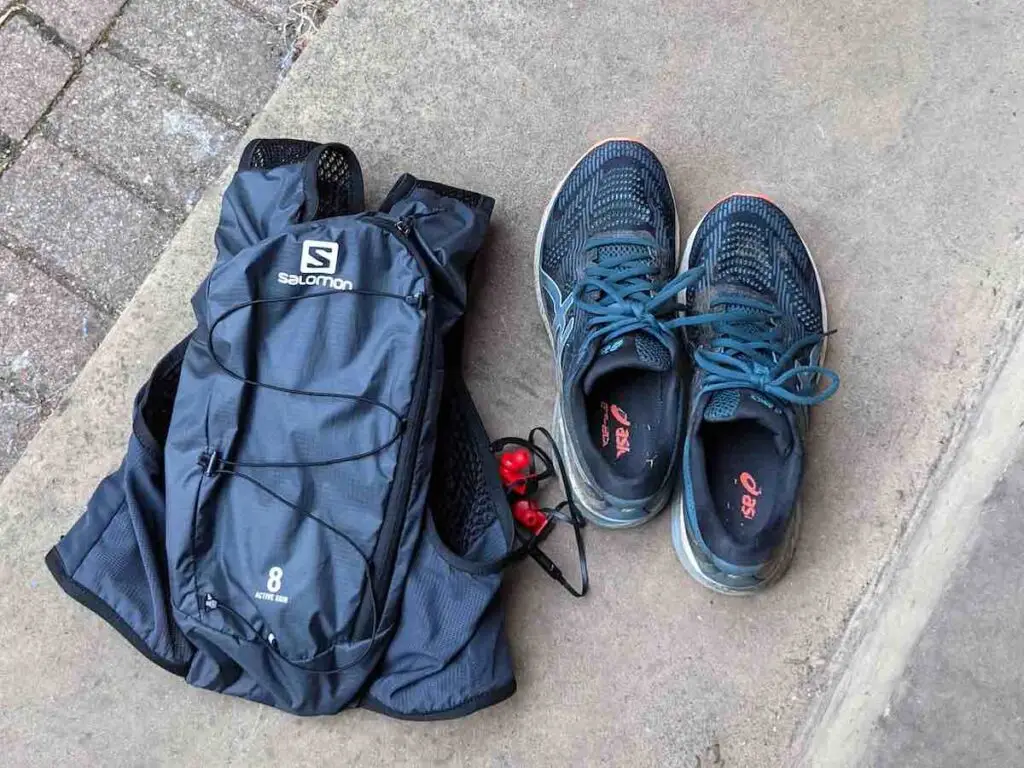
Trail running shoes – The first and most crucial piece of trail running gear is a good pair of trail running shoes. These shoes offer better traction, support, and protection compared to road-running shoes, making it easier to navigate uneven terrains, roots, rocks, and slippery mud. Look for features like deep lugs for grip, stiffer soles for stability, and reinforced uppers for durability.
Trail running clothing – Lightweight, breathable, and moisture-wicking fabrics are essential for trail running. Avoid cotton, as it retains moisture and can cause chafing. Opt for synthetic or wool running socks, and trail running shorts or leggings. Depending on the weather and trail conditions, you may also need a waterproof running jacket, gloves, and a hat as cover is not always guaranteed.
Running hydration vest – Staying hydrated is crucial, especially on longer trail runs. Hydration packs and vests offer an accessible and convenient way to carry water, snacks, your phone, and even a light jacket. I can vouch for the Salomon Active Skin 8.

Safety and Navigation – Carry a map and compass or GPS watch to track your progress and stay on course. Some GPS watches also provide valuable information like distance, pace, and elevation. Always have a fully charged phone for emergencies and a headlamp in low visibility.
Trail running apps – Worthy of their own training running app guide, there’s no shortage of good apps to help to plan local trail routes, track your progress, and pay it forward for other trail runners.
Optional extras – Longer trails require preparation for more eventualities. Consider packing extras such as:
- a small first aid kit – especially for blisters and personal medication
- lightweight, nutrient-dense snacks like energy gels and electrolyte tablets
- toilet roll and sanitiser for ultras
- cash for snacks on remote trails
- trekking poles – even experienced trail runners carry lightweight poles to speed up their ascents and descents. Many models fold down and will fit into your backpack for the flats.
In Summary: How to Start Trail Running, the Joy Runs Way
Equal part challenging and stimulating, there’s SO much to love about trail running.
By following these tips for how to start trail running, any initial trepidation will give way to the most liberating form of exercise.
You’ll discover new routes, new perspectives, and the ability to find wonder and solace in the most incredible places on your doorstep.
As you embark on your trail running journey, it’s essential to be equipped with the right gear and a respect for your natural surroundings. Take the time to understand the local trails and their difficulty levels, ensuring your safety, and preserving the planet for fellow trail users and future generations alike.
So, lace up those trail shoes, unleash your inner adventurer, and experience the unparalleled joy and tranquillity of running in nature.
Let us know what you love about trail running in the comments below…

